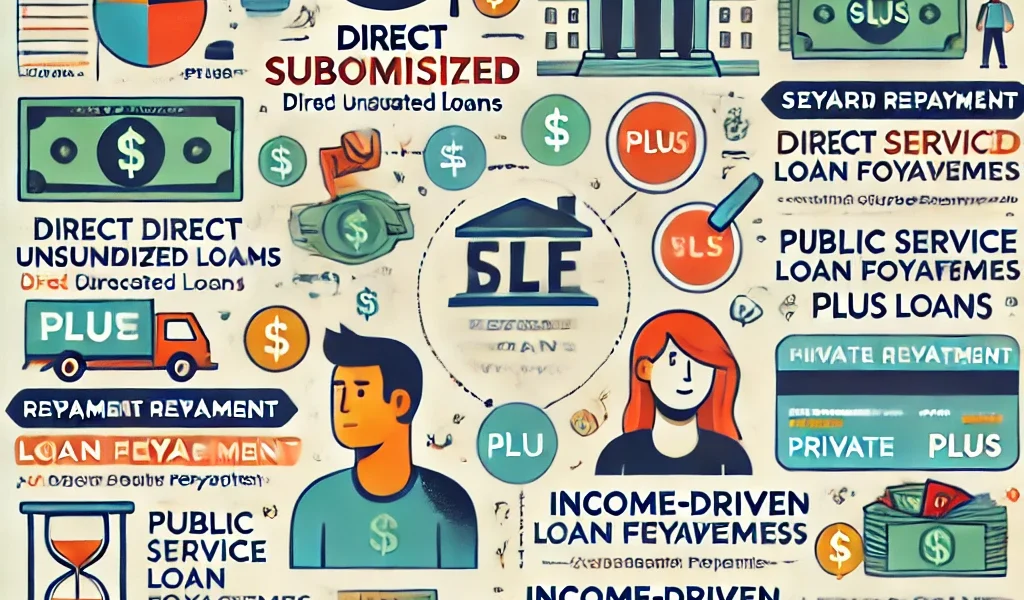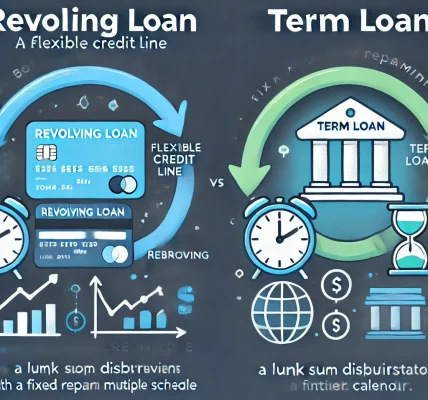Introduction
Higher education can be expensive, making student loans a necessity for many students. While student loans provide access to education, understanding their types, repayment options, and forgiveness programs is crucial for managing debt responsibly.
This guide covers the different types of student loans, repayment strategies, and options for loan forgiveness to help borrowers make informed financial decisions.
Types of Student Loans
Student loans can be broadly categorized into federal and private loans. Each comes with distinct terms, interest rates, and repayment options.
1. Federal Student Loans
Offered by the U.S. Department of Education, federal loans typically have lower interest rates and flexible repayment options. Key types include:
- Direct Subsidized Loans: Available to undergraduate students with financial need. The government pays the interest while the student is in school.
- Direct Unsubsidized Loans: Available to both undergraduate and graduate students. Interest accrues during school and deferment periods.
- Direct PLUS Loans: For graduate students and parents of dependent undergraduates. Requires a credit check.
- Direct Consolidation Loans: Allows borrowers to combine multiple federal loans into one with a single monthly payment.
2. Private Student Loans
Issued by banks, credit unions, and other private lenders, these loans typically have higher interest rates and fewer repayment options. Key considerations for private loans:
- Credit score influences eligibility and interest rates.
- Often require a co-signer.
- Fewer deferment and forgiveness options compared to federal loans.
Repayment Options for Student Loans
Repayment plans vary based on the type of loan and borrower’s financial situation. Federal loans offer more flexible repayment plans than private loans.
1. Standard Repayment Plan
- Fixed monthly payments over 10 years.
- Suitable for borrowers who can afford higher monthly payments to pay off debt faster.
2. Graduated Repayment Plan
- Payments start low and increase every two years.
- Designed for borrowers who expect their income to rise over time.
3. Extended Repayment Plan
- Allows repayment over 25 years.
- Reduces monthly payments but increases total interest paid.
4. Income-Driven Repayment (IDR) Plans
For federal student loans, IDR plans base monthly payments on income and family size. Popular IDR plans include:
- Income-Based Repayment (IBR): Caps payments at 10-15% of discretionary income.
- Pay As You Earn (PAYE): Payments set at 10% of discretionary income.
- Revised Pay As You Earn (REPAYE): Similar to PAYE but available to all federal borrowers.
- Income-Contingent Repayment (ICR): Payments are the lesser of 20% of discretionary income or a fixed payment over 12 years.
5. Private Loan Repayment
- Typically requires fixed payments over 5 to 20 years.
- Some lenders offer income-based options, but flexibility is limited compared to federal loans.
Student Loan Forgiveness Programs
Several federal programs help borrowers reduce or eliminate student debt under specific conditions.
1. Public Service Loan Forgiveness (PSLF)
- Available to borrowers working full-time in public service (government or nonprofit organizations).
- Requires 120 qualifying monthly payments under an IDR plan.
- Remaining loan balance is forgiven after 10 years of service.
2. Teacher Loan Forgiveness
- For teachers working in low-income schools for 5 consecutive years.
- Forgives up to $17,500 in Direct or FFEL loans.
3. Income-Driven Repayment (IDR) Forgiveness
- After 20-25 years of qualifying payments, any remaining balance is forgiven.
- Forgiven amounts may be subject to taxes.
4. Military and State-Specific Forgiveness Programs
- Various state and federal programs offer student loan forgiveness for military personnel, healthcare workers, and other professionals.
Tips for Managing Student Loans
Managing student loans effectively helps reduce financial stress and improves long-term financial stability.
1. Create a Budget
- Track income and expenses to ensure timely loan payments.
- Prioritize high-interest loans to reduce overall debt.
2. Make Extra Payments
- Paying more than the minimum reduces interest accumulation and shortens repayment time.
- Specify that extra payments should go toward the principal balance.
3. Refinance Private Loans
- Borrowers with good credit may refinance private loans to secure lower interest rates.
- Consider loan terms and fees before refinancing.
4. Stay Informed About Forgiveness Programs
- Regularly check federal loan forgiveness eligibility and program updates.
- Submit PSLF forms and payment certifications on time.
5. Communicate with Loan Servicers
- If facing financial hardship, contact lenders for deferment, forbearance, or repayment plan adjustments.
- Avoid defaulting, as it can severely impact credit scores and future financial opportunities.
Conclusion
Understanding the different types of student loans, repayment plans, and forgiveness options is essential for managing debt effectively. Federal loans offer more repayment flexibility and forgiveness opportunities, while private loans require careful financial planning.




